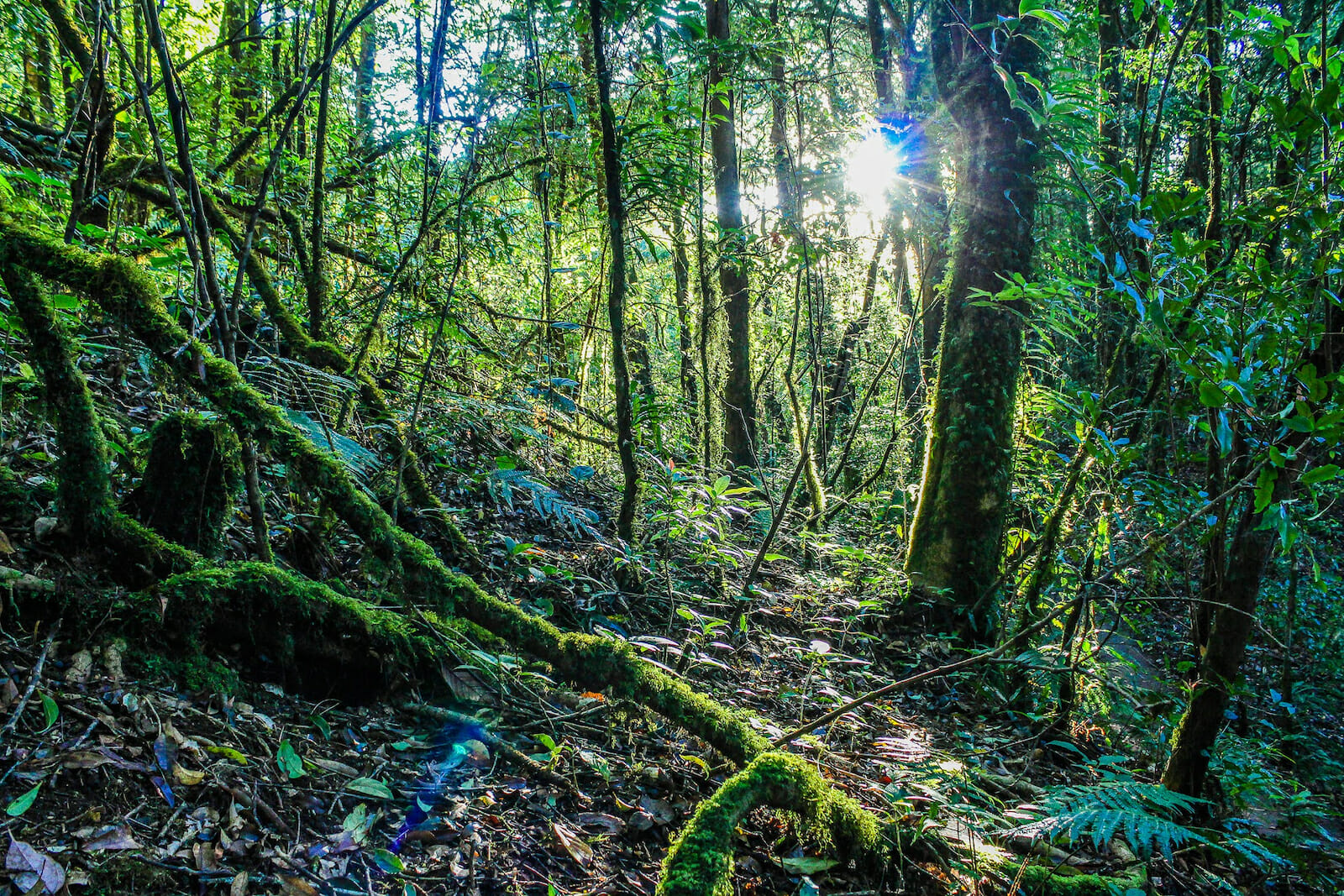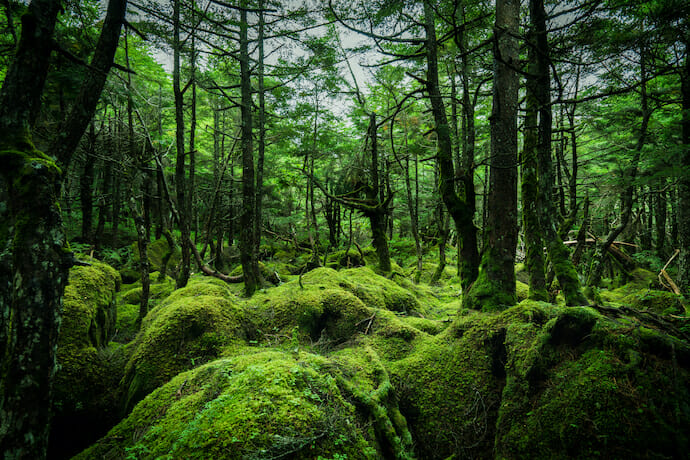
Why Comprehensive Forest Policy is Crucial for Sustainable Development
Forests are seldom formally classified as resources, even rarely viewed as such. Most of modern urban and industrial expansion is met at the expense of forests. It is a rare event that forests are envisioned as key stakes in economic development. Policymaking overlooks forests, and businesses often view environmental restrictions as a liability. Even governments who have implemented well-thought-out forest protection policies and enacted rigorous and extensive provisions for forest usage, rely on a chain of permits, prerequisites and sanctions, a quantitative limit or a reservation delineation. Bureaucratic filters and quantitative delimitations disregard the qualitative aspects of the forest. This inconsideration and alienation of forests from integrated development has led to general neglect of nuances and intricacies of forests as dynamic entities and ecosystems.
In the lack of nuanced treatment of forests, we can observe extremely gross generalisations. Two areas or patches within the same forest are seldom similar, let alone across forests of different kinds. Devising an adaptive and integral forest-economy policy that reconciles forest-resource and land requirements with guaranteed optimal forest sustenance is a pressing need.
Forests are extremely complex and diverse entities which are subjected to diverse stresses and strains. The qualitative aspects of a forest have a lot of bearing on their well-being and sustenance. It is often argued about how much forest cover should be kept intact and what rate of forest depletion is tolerable, but there are multiple other pertinent questions that are left unattended. Assuming that one has arrived at a general consensus regarding what amount of resources are to be extracted from the forest, there are multiple intrinsic factors that need to be accounted for in order to minimise the lasting harm dealt to the forest in process of the resource extraction. Forests have a natural tenacity to cope with calamitous change and a general recuperative ability to restore their integrity. Arbitrarily designating a part of the forest for resource extraction or sparing a free hand to industries to exercise their discretion can prove detrimental to the robustness and continued sustenance of the forest. There are various factors that need to be considered in order to optimise resource extraction. Some of the pertinent questions are – Which forests should be used first? Should resource extraction be done from all parts of the forest or one particular area? Should the designation be uniform or discriminate? What part(s) of a forest should be dedicated to resource extraction?
The primary consideration is where should a particular area of forest land allocated for usage be situated inside the forest. There are two important factors in this regard. A forest is more than a loose collection of trees. A forest is somewhat of a superorganism – a close-knit symbiotic entity, promoting collective working towards common good than promoting individualistic competitiveness. Although there is not much insight in this field of ongoing scientific inspection, it is known that in a forest, tree roots are intimately and densely interconnected, form an information superhighway, coordinate workings, exchange material, stimuli, and responses, and help each other. For instance, tree stumps that would have been dead in isolation, can be kept alive by adjacent trees. The roots thus form a communication-cum-transport network and unite the forest. A similar role is played by fungal networks – further testifying to the fact that a forest has much more going on than meets the eye.
Forests can heal deforested patches enclosed by other vegetation easily akin to wound healing, while severing a portion from the edges is more destructive, given that more surface is exposed outwards to external vagaries and lesser frontier faces the interior, where seed dispersion in an enclosure could have healed it.
Primary structural responses which are intuitively obvious results of deforestation process, such as canopy alteration, tree density change, deforestation debris, foliage change, and biomass transformation, gives rise to secondary responses by disturbing the original, stable biotic and abiotic gradients – these responses include changes in sapling density, undergrowth, shrub height, and specific composition. These, in turn, influence the multitude of complex biotic interactions that keep occurring in the forest. Indiscriminate deforestation does not solely stand the risk of excising an area of low recovery rate but might also end up crippling the forest’s natural tenacity to cope and adapt with change, at times irreversibly.

Moreover, as forests fragment and split into discrete, isolated compartments, the individual units of the patchwork expose more surface area outwards, become more prone to succumbing to random environmental fluctuations, internal disproportionations and imbalances, and cataclysms, and lose their structural integrity. Fragmented forests are likelier to individually undergo decimation due to higher likelihood of portions having an unsustainable population of certain species that usurps the delicate interdependence, throws them into imbalance, and renders them susceptible to further human interference by facilitating mobility through the newly-formed corridors and aisles. Fragmentation leads forested areas to fall beneath sustainable thresholds, throwing them into a spiral of decay and ultimate doom. Progressive deterioration occurs due to a tail-spinning seesaw of consumption ensuing as a result of abundance of one trophic level leading to those above it increasing drastically, in turn decreasing it beyond bounds of recovery. These sudden changes are moderated, diluted, dissipated or self-adjusted in larger ecosystems but might magnify and snowball in smaller ecosystems.
Genetic Drift is another phenomenon in which serendipitous changes create a disparity between populations of the same species. Fragmentation limits gene flow between vicinal populations and disrupts the continuum of interspecies breeding across a geographical range. As populations become small and isolated, their genetic diversity and robustness falls, gene flow dynamics get impeded and it gets likelier that specific predominance and disproportionation would botch up one or more of the dynamic equilibria that maintain stability in the ecosystem. Habitat fragmentation thus leads to a greater likelihood of inbreeding which increases the chances of hereditary ailments.
As fragments expose a greater sum total edge, detrimental “edge-effects” gain prominence and risks of temperature fluctuation, wind damage, predation, etc. get amplified. Canopy closure, water retention, and vegetation stratification which offer sanctuary to budding plants and foster regeneration are also diminished at the edges. Moreover, the disparity is not merely linear. Edge effects and interfacial phenomena do not manifest only at the very last bordering tree of the forest, but affect the vegetation and habitat in a few hundred feet from the flank. As Northern Woodlands Mission states “…a circular forest island in a sea of non-forest would have to be more than 14 acres in size to include just one acre of such interior forest condition. Put differently, reports indicate that the negative habitat effects of each residential building pocket within a forest radiate outward, affecting up to 30 additional acres with increased disturbance, predation, and competition from edge-dwellers.” Forest fragments are akin to ice-cubes – the smaller ones melt faster.
In a contiguous forest, predation occurs in a balanced and sustainable way, while fragments or “islets” stand risk of over predation or under predation. An intact, integral forest cover usually ensures a fair play-field for all, and prevents domination. Fragmentation also disturbs animal migration routes leading to potential scarcity or non-diversity of food and mating partners and lack of communication and interaction, induces severe behavioral stress, and confounds general routine patterns of conduct. Just like the vegetation, the fauna are not able to cope with sudden inflections, both as individuals, as well, as populations. The adaptation ability of denizens is also hampered given small-enough population size.
Discreet care must also be taken of interspecies competition. Plants in a forest are cooperative, but only to a certain extent and subject to nature, distribution and circumstances. Indiscriminate afforestation that disregards competing needs of various plant species, and struggle and strife among neighboring flora, can end up doing more harm than good, as feared in a planned, massive plantation drive along India’s Kaveri river.
Biodiversity preservation is a critical consideration. If a subspecies or variety of creature dwells exclusively in one portion of the forest, or depends on one particular type of vegetation nigh-exclusively, allotting that portion for usage could jeopardise its survival. If a part of the forest is distinct, niche and unique, devoting it towards resource extraction would imperil endemic species that dwell in it. It is important to understand that forests often might have a multitude of overlapping or even disjoint ecosystems and sub ecosystems within themselves – each portion might possess enough nuance to render them of salient value. If an area of forest has enough exclusivity of traits, it should be demarcated as a reserved area and be excluded from the domain of resource extraction. Forest areas containing or adjoining important animal migration routes and sites such as waterholes, should also be excised from the scope of economic usability. Specific attention should also be meted out to slow-breeding, slow-proliferating, sedentary, and critically-endangered species.
Broadly, allocating multiple small parts of interior forests of varying but non-unique nature is the most suitable strategy. Several small parts can be readily and quickly healed and their biodiverse integrity restored by circumscribing seed dispersion. Interior forest conditions are intrinsically conducive to natural vegetation recovery, besides the obvious perimetric consideration. A small patch is less likely to wholly or majorly contain a specific population.
In South-East Asia, the Orangutan populations have suffered immense damage from habitat fragmentation. Complex emotional ties and a sense of belongingness to particular places and dwellings endanger them further. The Palm Oil Industry’s indiscriminate deforestation has impaired their habits, interactions, and behavioral and mating patterns. The accessibility of fragments to poachers further deteriorates the situation.
Forest recuperation and habitat fragmentations are two major considerations that need to be incorporated into forest planning and legislation. Devising a systematic, coherent and integral Forest Management Policy that reconciles economic and sustainability needs is a pressing need. Any such policy must be tailor-made and approached from the grassroots. Extensive and comprehensive surveys, field studies, and optimization computations must be undertaken in order to provide vital, insightful inputs to policymakers. Forest Policy should be dynamic – constantly evolving in light of updated surveys, and be back by research, testing, and case-studies. Constant monitoring of vital statistics of forests is very important, and technical assistance of remote sensing, networked in-situ data gathering, and advanced computation can facilitate it. Any cap on deforestation must also provide for selection or exclusion of the prospected land, and be dynamic in nature. All in all, any policymaking ought to acknowledge forests as living, changing, active entities rather than taken-for-granted passive resources.

